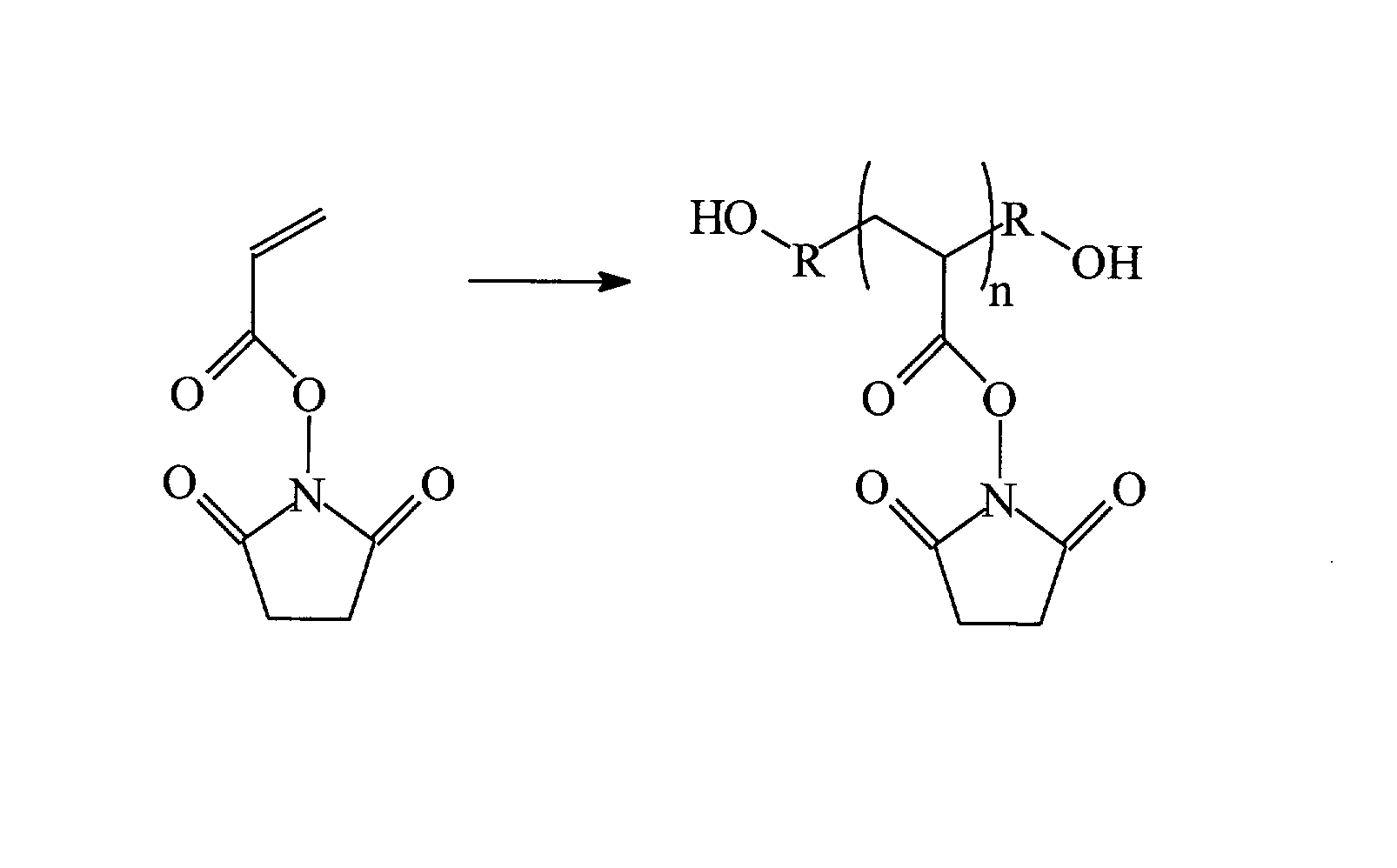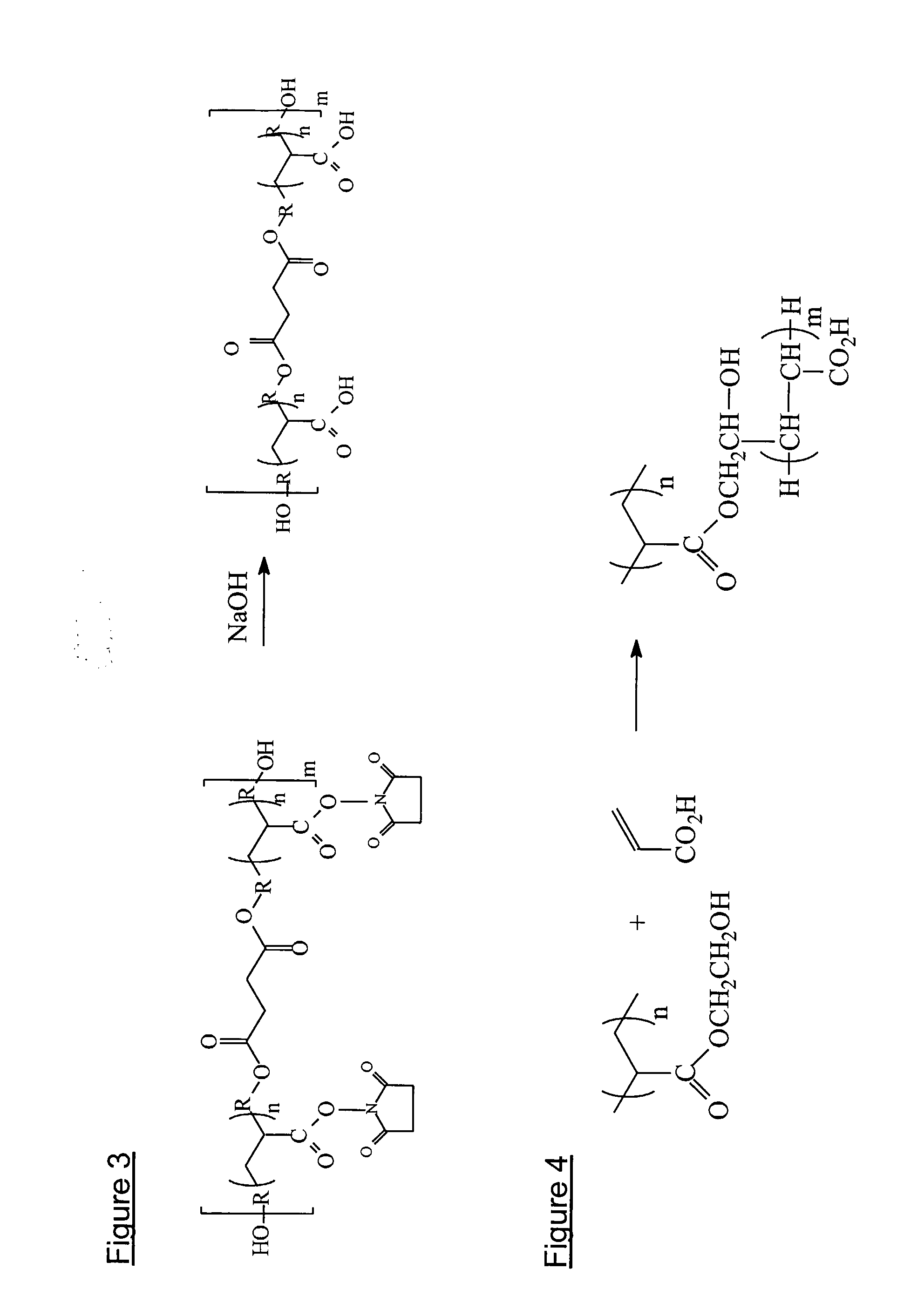Tissue-Adhesive Materials
a technology of tissue adhesives and adhesive sheets, applied in the field of flexible sheets, can solve the problems of limited life, difficult to apply precisely to the desired area of tissue, and being prepared in hydrated form, and achieve the effects of improving flexibility, less brittleness, and increasing mechanical strength and/or flexibility of the film
- Summary
- Abstract
- Description
- Claims
- Application Information
AI Technical Summary
Benefits of technology
Problems solved by technology
Method used
Image
Examples
example a
General Method for the Preparation of Bioadhesive Sheets Using Functionalised HPC
[0178]
Functionalised HPC1.0 gNon-adhesive additive0.1 gTissue-reactive polymer0.6 gNon-functionalised synthetic0.5 gpolymerPlasticizer1.0 gAminated polymer0.2 g
[0179] Sheets made using this formulation are produced by dissolving the components, with the exception of the animated polymer in 15 / 4 v / v dichloromethane / methanol (DCM / MeOH). Once fully mixed, they are combined with a suspension of the animated polymer in the same solvent. The sheets are dried at approximately 40° C. until dry and then at 90° C. under vacuum for 3-4 hours to provide further cross linking via the condensation of acid functionalities with alcohol functionalities present in the constituent polymers.
[0180] Particular materials that may be used include the following:
Functionalised HPCHPC-terpolymer conjugate of Example M1.0 gNon-adhesive additivepoly(DL-lactide-co-glycolide) as supplied by Purac0.1 gBiochem BV (Gorinchem, The Ne...
examples b-d
Preferred Formulations Used to Produce Bioadhesive Sheets Using Poly(Acrylic Acid)
[0181] Sheets in accordance with the invention were prepared by dispersing the following ingredients, at the concentrations shown, in 100 ml of 50:50 acetone:water:
% w / wExample BExample CExample DCarbopol 907353Poly(VP-AAc-AAc(NHS))*202PEG 200**303sucrose224glycerol202
*a 50:50 copolymer of acrylic acid and N-vinyl pyrrolidone in which approximately one-half of the acrylic acid carboxyl groups are activated to form reactive NHS ester groups (as shown in Example K)
**polyethylene glycol of approximate relative molecular weight 200
[0182] The solution was poured into a PTFE-lined Petri dish or cast onto a PTFE plate and the acetone removed by heating at 40° C. for 16 hours. The sheet was subsequently cured for four hours at 90° C. (Examples B and C) or 8 hours at 90° C. (Example D).
[0183] The adhesion of the sheets to porcine liver was measured by placing a 15 mm×15 mm sample onto excised porcine live...
examples e-i
Poly(Acrylic Acid)-Containing Materials that May be Incorporated into the Formulations Shown in Examples B-D Above, as a Direct Replacement for the Non-Functionalised Synthetic Polymer, Carbopol 907
[0186] In each case, poly(acrylic acid) is grafted onto a main polymer backbone, via a degradable linkage and with a combined molecular weight of poly(acrylic acid) of 250,000 or greater.
[0187] The methods of synthesis of Examples E-F are modified from covalent coupling of immunoglobulin G to a poly(vinyl alcohol)-poly(acrylic acid) graft polymer as a method of fabricating the interfacial-recognition layer of a surface plasmon resonance immunosensor (Disley D. M. et al, Biosensors and Bioelectronics (1998), Vol 13, No. 3-4 pp 383-396).
[0188]FIG. 4 shows the reaction between PVOH and acrylic acid in the presence of an oxidising agent, cerium (IV).
PUM
| Property | Measurement | Unit |
|---|---|---|
| thickness | aaaaa | aaaaa |
| water-content | aaaaa | aaaaa |
| molar ratio | aaaaa | aaaaa |
Abstract
Description
Claims
Application Information
 Login to View More
Login to View More - R&D
- Intellectual Property
- Life Sciences
- Materials
- Tech Scout
- Unparalleled Data Quality
- Higher Quality Content
- 60% Fewer Hallucinations
Browse by: Latest US Patents, China's latest patents, Technical Efficacy Thesaurus, Application Domain, Technology Topic, Popular Technical Reports.
© 2025 PatSnap. All rights reserved.Legal|Privacy policy|Modern Slavery Act Transparency Statement|Sitemap|About US| Contact US: help@patsnap.com



